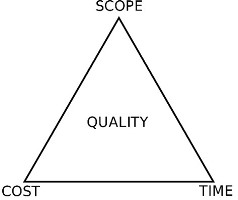FEATURED PAPER
Dr. Dale S. Deardorff
Engineering Management, CSUN
MSEM, California State University – Tseng College
Northridge, California, USA
Abstract
Modern organizations strive to become more effective and efficient in Project Management activities during the challenges of virtual working situations and environments. Collaboration is disconnected due to the lack of face-to-face accountability and many times people resources do not know exactly what they are responsible for. Additionally, the focus of getting the right people, doing the right thing, at the right time becomes overwhelming due to poor initial project planning and scheduling. Negative risks occur and the possibility of capturing positive risks evaporate due to a lack of accurate schedule planning and forecasting.
Keywords: Integrated Micro Scheduling, Project Management, Project Management Initiatives, Project Effectiveness, Project Efficiency, Project Accountability, Project Collaboration.
Introduction
The purpose of this paper is to provide a framework of opinion, enlightenment and advanced pracademic learning based on the premise of project Integrated Micro Scheduling. The utilization of the Integrated Micro Scheduling tool can be used for clarity of critical or essential project task elements in addition to optimizing project process flow accuracy. This Integrated Micro Scheduling tool has been adapted to include additional elements of macro views without getting lost in project inch-stone and inch-pebble management.
The positive elements of project communication are enhanced and optimized including personal accounting when we have an accurate analysis and picture of the current project status. The Project Management Triangle, used since the 1950’s, is a questionable measurement of success because it is based on the premise that you can trade (optimize) one constraint to increase another. Unfortunately, as seen in Figure 1 below, many of the constraints are locked and cannot be modified.

Figure 1: Project Management Triangle
So adjusting “Time” (Project Schedule) may not reduce the cost of the project. Conversely, adjusting the scope or quality of the project may not impact or change the “Time” required to complete and deliver a project. It is proposed that by getting the right people (resources), doing the right thing (scope), at the right time (schedule baseline) is the primary goal of a Project Manager. These are the basic measures of increasing the effectiveness and efficiency (et al. Zidane, 2016) of the project variables as published by a systems thinking perspective for a road construction megaproject. Typical Project Management views of a project schedule include but are not limited to Gantt Charts, Network Diagrams, PERT (Program Evaluation and Review Technique) Analysis and CPM (Critical Path Method). Each of these views illustrate a unique perspective of a project’s performance and current situation.
What the author is proposing is utilizing a technique referred to as Integrated Micro Scheduling. To begin the journey to understanding this technique, we will first require a valid operational definition:
“Integrated Micro Scheduling – a technique for planning, mapping and managing the key activities, tasks, and milestones on a project by graphically identifying the planned sequential project steps and adding baseline start and baseline end dates based on available resources. Additionally, the technique allows for the tracking of the project performance based on calculating an actual start and actual finish date in addition to the percent complete (Deardorff, 2020)”.
Now that we have a solid operational definition, we need to provide some historical context and a clear explanation of the concept of Integrated Micro Scheduling.
More…
To read entire paper, click here
Author’s note: Integrated Micro Scheduling templates and development were sponsored by the Rocky Peak Leadership Center. Correspondence concerning this article should be addressed to Dr. Dale S. Deardorff, Rocky Peak Leadership Center, 11238 Sierra Pass Place, Chatsworth, California, CA 91311, United States. Email: dale.deardorff@csun.edu
How to cite this paper: Deardorff, D. S. (2020). How Integrated Micro Scheduling Can Save Your Project Management Initiative; PM World Journal, Vol. X, Issue I, January. Available online at https://pmworldlibrary.net/wp-content/uploads/2021/01/pmwj101-Jan2021-Deardorff-how-integrated-micro-scheduling-can-save-your-project-management-initiative.pdf
About the Author

Dr. Dale S. Deardorff
California, USA
![]()
Dr. Dale S. Deardorff worked for Boeing Integrated Defense Systems and Space Propulsion Development divisions as a Project and Program manager for over 20 years. He worked for the Lockheed Burbank “Skunk” works and Aircraft division for almost 10 years and a high technology Valencia California start up for a couple of years. This 30 plus years’ experience is a “Pracademic” blending of commercial, military, government, NASA and high technology organizations. Dale has taught Project Management “on-line” for multiple universities as an adjunct instructor since 2003 and continues to contribute to project management methodologies and philosophies as a current thought leader.
He created the Rocky Peak Leadership Center in 2010 and has helped modern organizations as an enterprise and executive consultant in the areas of thinking methodologies, Innovation and leadership training and facilitation. Dr. Deardorff volunteers with youth leadership programs and supports local youth training in the areas of personal mastery and effective collaboration techniques.
Rocky Peak Leadership Center – www.rockypeakLC.com
Dale S Deardorff contact – d.s.deardorff@gmail.com









